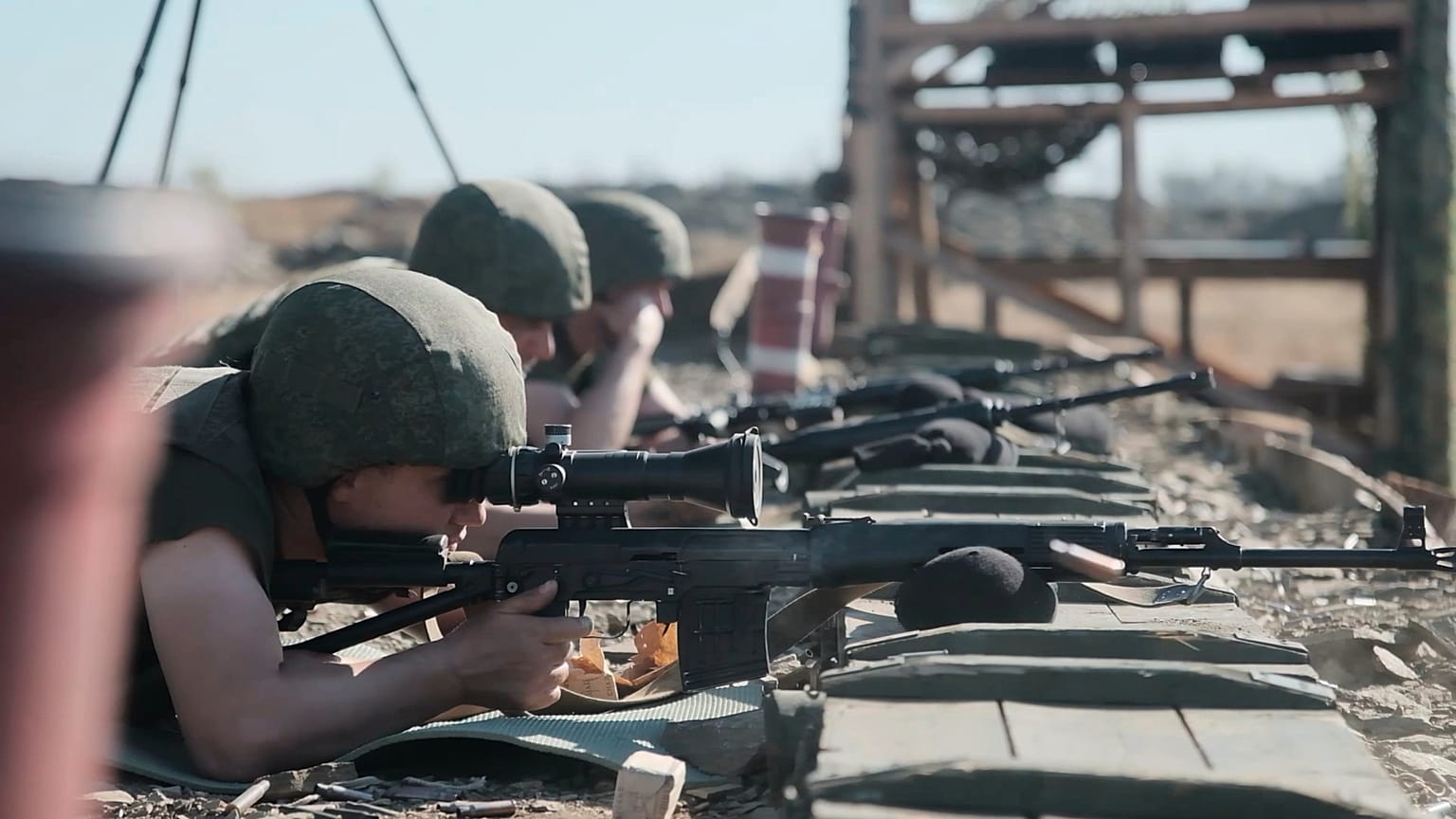The Defence Readiness Roadmap sets clear targets for the rollout of key military capabilities, but fails to provide anything new regarding financing.
The EU plans to have its so-called "drone wall" fully functional and integrated within a "network based drone capability" by the end of 2027, according to a leaked copy of the upcoming Defence Readiness Roadmap 2030 seen by Euronews.
The document, which the European Commission will officially unveil on Thursday, builds on months of talks between the EU's executive and member states to completely revamp the bloc's defence policy in the face of an increasingly belligerent Russia.
The EU has already set a list of nine capability priority areas for member states to invest in as a matter of urgency including ammunition, drone and anti-drone technology, with the Commission also proposing earlier this month that four pan-European flagship projects be prioritised.
It listed them as the Eastern Flank Watch, including the European Drone Wall, the Air Defence Shield and a Defence Space Shield.
The roadmap gives a first timeline as to when the Commission estimates these could be up and running. It states that the eastern flank and the drone wall "are the most urgent".
It also envisions the latter being fully functional and integrated within a network-based drone capability – by the end of 2027," with the former functional "by the end of 2028".
"The counter drone capabilities will be designed as a multi-layered, technologically advanced system with interoperable anti-drone capabilities for detection, tracking, and neutralisation, as well as capabilities to hit ground targets leveraging drone technology for precision strikes," the document reads.
"The counter drone capacity should be fully interoperable and connected between member states providing European situational awareness and ability to act together and secure critical infrastructure together with NATO," it adds.
It also gives more clarity on the topic of military mobility, which has been defined as another priority area and which will be the subject of another package set to be released next month.
How to fund the wall
In the roadmap, the Commission expects that "an EU-wide military mobility area, with harmonised rules and procedures and a network of land corridors, airports, seaports, and support elements ensuring unhindered transport of troops and military equipment across the union, in close coordination with NATO" will be set up "by end 2027".
Currently, some member states require 45 days to process requests by other EU countries to move troops or military equipment within their borders.
The aim of the various defence initiatives put forward by the Commission so far, including a defence loan scheme, dubbed SAFE, has been to boost joint procurement of military capabilities and support the European Defence Technological and Industrial Base (EDTIB).
It believes this can lower costs, expedite deliveries, and enhance interoperability among member states' armed forces.
The roadmap provides new targets with member states asked to "organise at least 40% of defence procurement as joint procurement – by end 2027" and to "procure at least 60% of their defence procurement budget from the EDTIB and from Ukraine – by end 2030".
But the roadmap fails to identify new financing streams to fund the ramp-up in European defence, despite calls from various member states.
It only reiterates that its proposal for the bloc's next multi-annual budget plans to boost defence funding to €131 billion, with military mobility receiving €18 billion, up from €1.76bn in the current budget.
Instead, it once again urges progress on a Savings and Investments Union in order to facilitate private investments in the sector and touts additional financing from the European Investment Bank (EIB), such as €1 billion "fund of funds" in equity to support the fast growth of defence-related scale-ups and defence related projects that should e set up before the end of the year.















